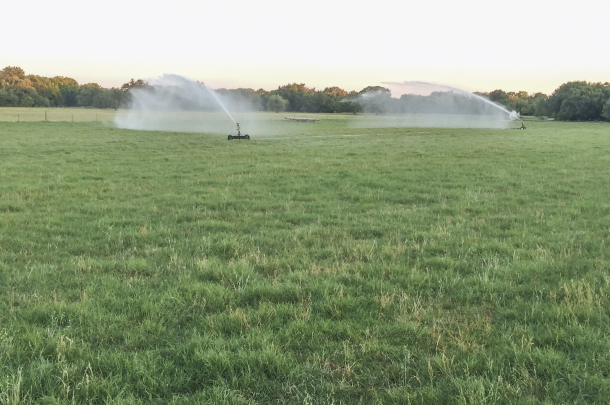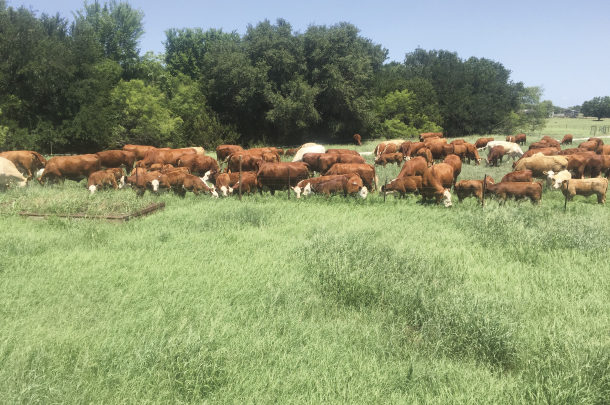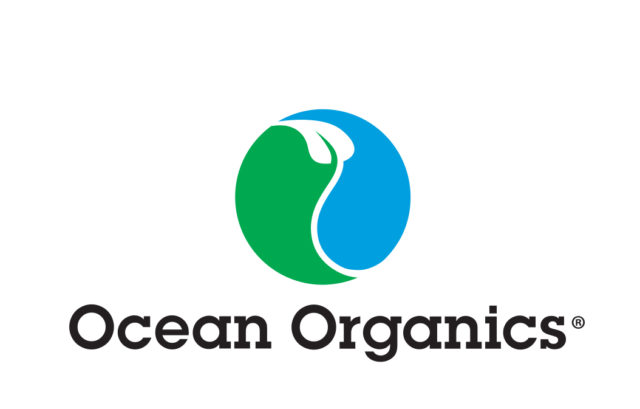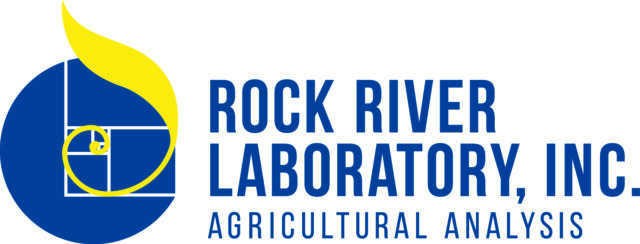Carbon dioxide (CO2) is a greenhouse gas with a lifespan of approximately 1,000 years. CO2 emissions are part of the global carbon cycle in which carbon in various forms is exchanged between the atmosphere, soil and water.
“An estimated 90 gigatons of carbon are released into the atmosphere annually by oceans,” said Katie Lewis of Texas AgriLife Research. “Sixty gigatonnes each year are released annually through plant respiration and decomposition. Fossil fuel and deforestation are responsible for the annual release of 9.3 and 1 gigatonnes, respectively. Total annual releases from these sources are estimated at 220.3 gigatonnes.”
Plants use CO2 from the atmosphere, water from the soil and sunlight to manufacture carbohydrates (sugars) through a process known as photosynthesis. During photosynthesis, oxygen from the CO2 is released back into the atmosphere. Some of the sugars, which contain carbon, are used by plants for growth and energy, while a percentage is exuded through roots to serve as a food source for microorganisms.
Carbon storage
“Through photosynthesis, approximately 120 gigatonnes of carbon are stored in soil annually, and 92.7 gigatonnes are absorbed by oceans. Bare soil contributes nothing to the carbon sink,” said Lewis. “Totally, 212.7 gigatonnes of carbon are added to the sinks every year, resulting in 7.6 gigatonnes of carbon released over the amount stored. Based on data collected at the Mauna Loa Observatory, net annual increases of carbon in the atmosphere average 4.5 gigatonnes.”
“Soil is a major carbon reservoir, but it could have the potential to be a sink,” Lewis continued. “The difference between sink and reservoir is that a sink accumulates carbon and a reservoir does not. For instance, the oceans and the atmosphere are carbon sinks whereas soil is a reservoir. Photosynthesis captures approximately 120 gigatonnes of carbon per year, but half of it is released through plant respiration and the other half through microbial decomposition.”
 Farmers and ranchers have a great opportunity to reduce CO2 in the atmosphere through enhanced carbon sequestration and at the same time create potential for increased crop productivity and reduced fertilizer requirements. Photo provided by Randle Murray.
Farmers and ranchers have a great opportunity to reduce CO2 in the atmosphere through enhanced carbon sequestration and at the same time create potential for increased crop productivity and reduced fertilizer requirements. Photo provided by Randle Murray.
Carbon is stored in soil as two different types, inorganic and organic. The process of plants capturing carbon dioxide, manufacturing organic carbon and storing it is referred to as sequestration. Soil inorganic carbon is mineral and occurs from weathering of rocks or the reaction of soil minerals with CO2. Organic carbon is present in soil organic matter. Organic matter decomposition provides energy for soil microbial growth and carbon for new cell formation. Soil contains about 8 to 15 tons of bacteria, fungi, protozoa, nematodes, earthworms and arthropods.
“Microorganisms perform a wide range of functions in promoting soil health,” said Paul Zorner, Locus Agricultural Solutions. “They decompose organic matter, which releases nutrients for absorption by plants, degrade[s] toxic residues and influence[s] weathering and solubilization of minerals. Soil microbes contribute to soil structure and aggregation, which increases water-holding capacity and drought tolerance.”
“Soil organic carbon (OC) represents 1,500 gigatonnes of carbon, which is more than in the atmosphere and terrestrial vegetation combined,” said Lewis. “Soil organic matter contains roughly 55 to 60 percent carbon.
“The carbon reservoir in soil constantly changes due to microbial cycling of soil organic matter. Soil organic carbon is like bank accounts. Carbon pools that turn over quickly act more like a checking account. More stable, mineral-associated carbon pools resemble savings accounts – the quantity is slower to change.”
Soil organic carbon storage involves three stages. First, CO2 is removed from the atmosphere through plant photosynthesis. In the second stage, carbon is transferred from CO2 to plant biomass. The third and final step is the transfer of carbon from plant biomass to soil, where it is stored as soil organic carbon in the most labile pool, where it can most easily be converted back to CO2. Over time, microorganisms convert organic materials into more stable fractions of carbon.
Management contributions
“Management impacts on soil can either turn it into a carbon sink or a reservoir where CO2 can be emitted into the atmosphere. Most labile carbon pools have the highest turnover rates in days to a few years and generally lead to carbon dioxide emissions,” said Lewis. “Managing soil to increase soil organic carbon requires looking beyond just capturing atmospheric carbon dioxide. We must find ways to retain carbon in the slow soil organic pool or sink.”
Stabilizing newly added carbon in soil is accomplished in one of three ways. Carbon can be biochemically resynthesized into complex molecules or strongly adsorbed to clays through chemical bonds. Physical protection of carbon inside macro- and microaggregates makes it inaccessible to soil organisms.
Soils depleted of organic carbon have the greatest potential to gain carbon, and most soils are far from the carbon saturation threshold. There is potential to increase and maintain carbon in soil; however, it is a long process. Soil organic carbon storage is enhanced by land management practices, such as conservation tillage, preservation of crop residues, crop rotation and livestock stocking rates that maintain healthy vegetative cover. These management techniques have been utilized by successful farmers and ranchers for many years.
“Conservation tillage [mulch-till, no-till, strip-till] helps maintain or increase soil organic matter because there is less mechanical disturbance and exposure to air. Exposed soil organic carbon reunites with oxygen to form CO2,” said Megan Fenton, Cornell University. “Cover crops help prevent erosion, which is important for maintaining soil organic carbon storage. Annual row crop rotation with high-biomass perennial grasses or legumes improves soil microbe diversity and increases soil organic carbon storage.”
“In addition to capturing CO2, carbon sequestration benefits soil properties,” said Mahdi Al-Kaisi, Iowa State University. “Soil structure becomes more stable and less prone to crusting and erosion. Water infiltration is improved with less surface runoff. Organic carbon increases soil water- and nutrient- holding capacity, which results in better crop drought tolerance. Disease organisms are suppressed, and crop health and vigor are improved as soil biological activity and diversity increase.”
Livestock management also has a big influence on carbon sequestration. A rotation grazing system allows soil and vegetation time to recover from grazing. Allowing pastures to rest rebuilds good soil quality characteristics such as soil structure, infiltration rate, organic matter and soil environment.
“Another good management practice is limiting livestock access to bare and wet areas where their hooves can expose soil,” said Al-Kaisi. “Hoof action, especially that of cattle, on bare soil can be worse than tillage. Not only do hooves disturb soil, but they can also cause surface compaction.”
Each management practice needs economic evaluation to ensure it will increase or maintain farm profits. Evolving carbon credit markets may help pay for management practices that enhance soil carbon storage. Enhanced soil carbon storage offers the greatest opportunity to decrease CO2 in the atmosphere.










